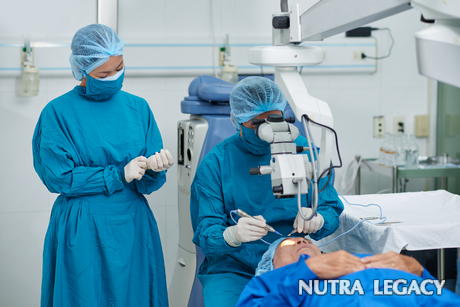Your Eye Under the Knife: Cataract Removal
Although cataracts are painless, as they develop they usually begin interfering with vision and eventually need removed. Cataracts cause the lens of the eye to become cloudy, blocking light from entering the eye and thus obstructing vision. Cataract operations are highly effective and low risk, with a short recovery time and minimal pain.

Before the cataract removal, an ophthalmologist will thoroughly examine your eye and administer a variety of tests, designed to help the doctor choose the correct replacement lens that will be inserted during surgery. He or she may also prescribe eye drops to be used before surgery.
Adults typically remain awake for the procedure, with local anesthesia and a sedative. Children, who may suffer from congenital cataracts, are put under general anesthesia for the cataract removal. The surgeon, while looking through a microscope, makes a small incision in the eye and removes the clouded lens. It is then replaced with an artificial intraocular lens (IOL) that will improve your vision. The incision is closed with either tiny sutures or a self-sealing method. The surgeon will only perform one cataract removal at a time, generally recommending a wait of one to two months between operations.
Cataract surgery recovery is fairly short and painless. You may be asked to wear a patch over the eye until the follow-up exam the next day, and possibly use eye drops for a week or so to promote healing. The eye should be completely healed in approximately 10 weeks, at which time you can schedule a new glasses or contact lens fitting.
The information supplied in this article is not to be considered as medical advice and is for educational purposes only.
|
| ||||||||||||||





 29 Oct 2009
29 Oct 2009